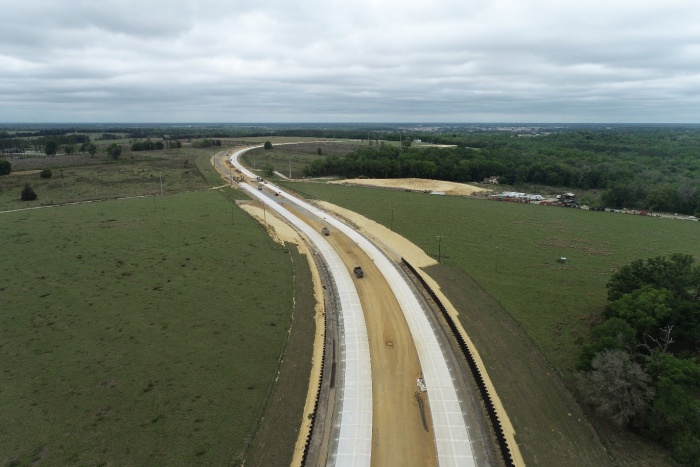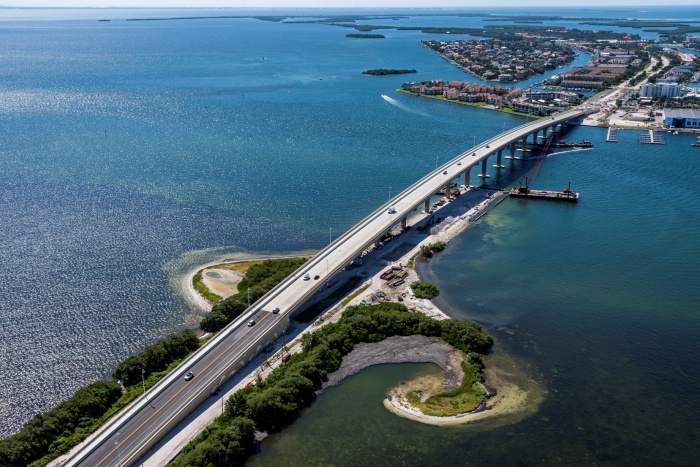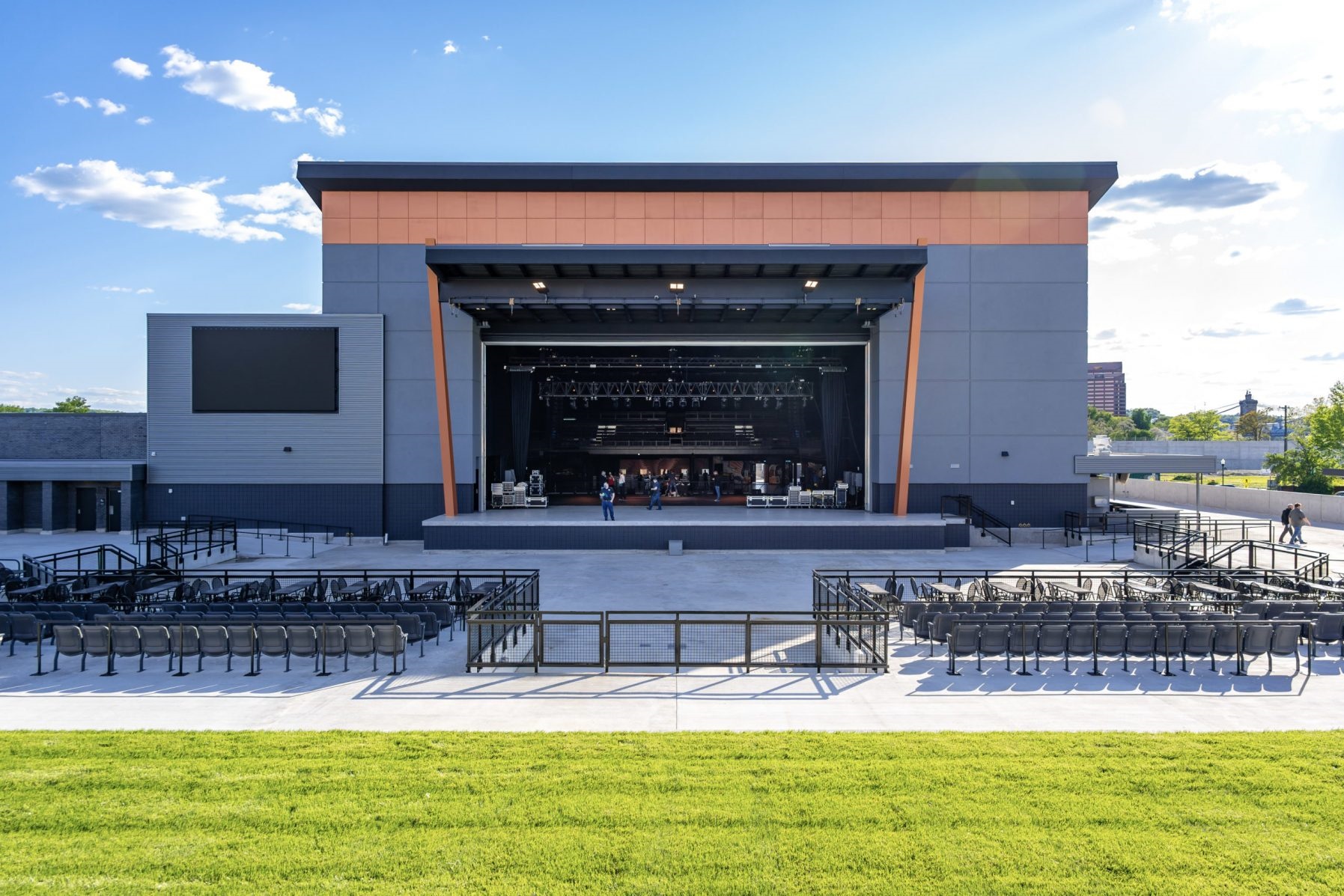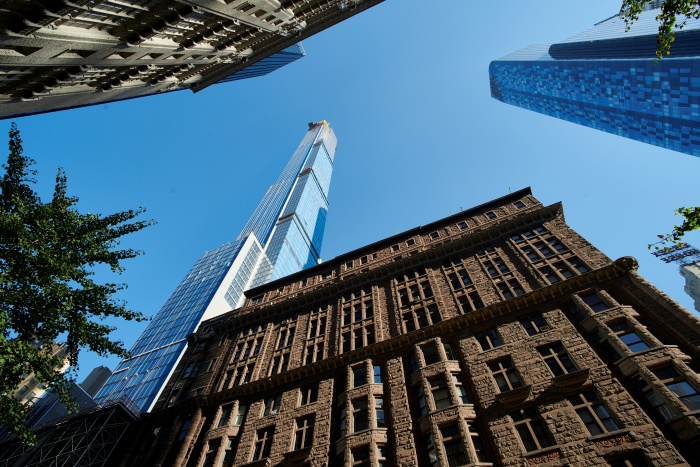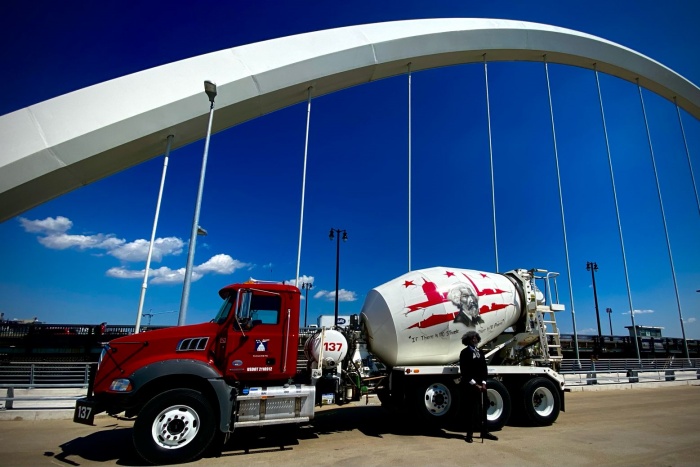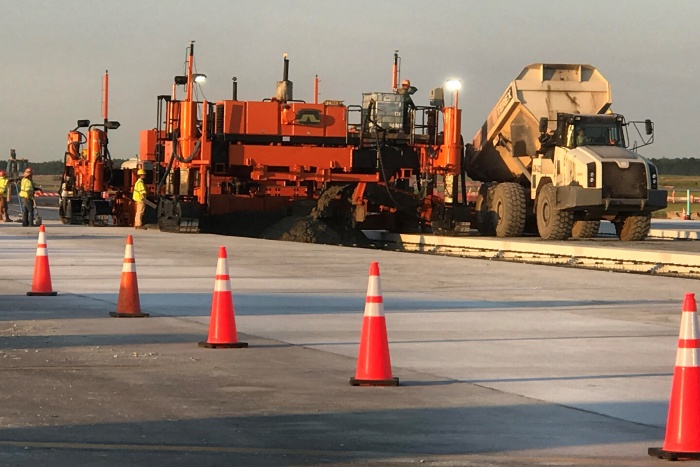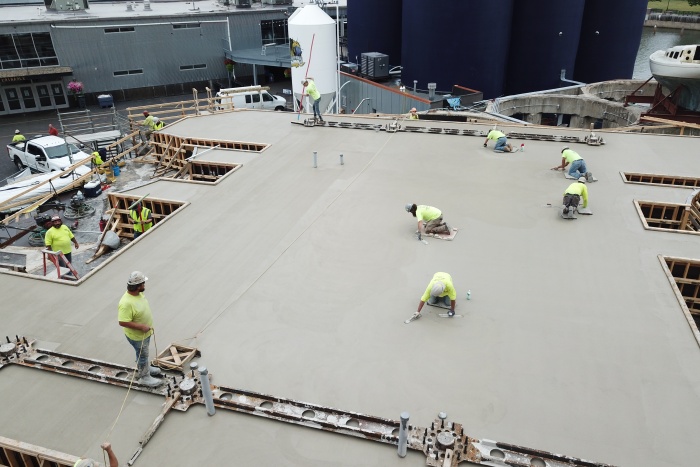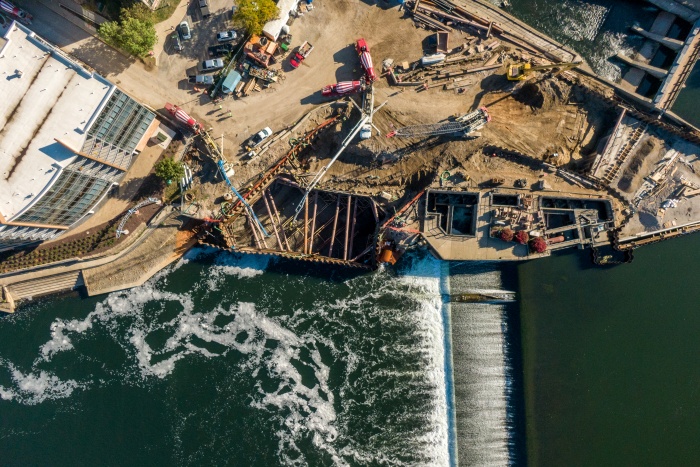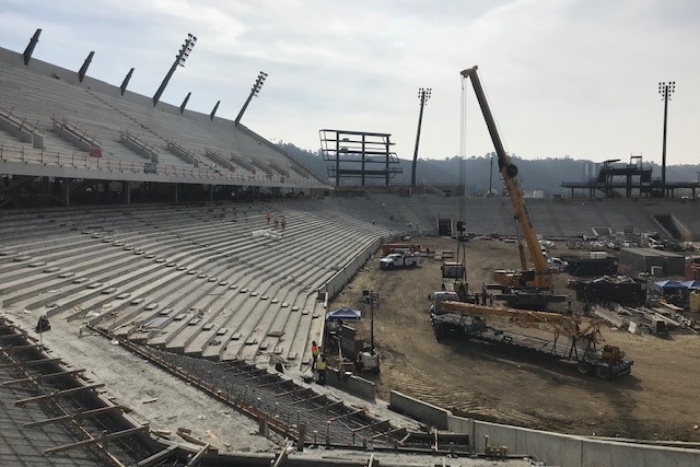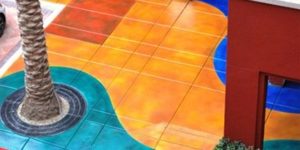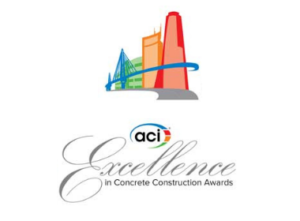The Slag Cement Association (SCA) is proud to announce the recipients of its 2021 Slag Cement In Sustainable Concrete Awards program. These awards were unveiled and celebrated this week during the American Concrete Institute Spring Convention.
Thirteen construction projects from across the United States were chosen to showcase the broad applications of slag cement and its impact on creating more durable and sustainable concrete. Two research projects on slag cement use are also being honored in this year’s program.
“This year’s winners include notable infrastructure and paving projects. All of these winners illustrate how slag cement works to improve the durability of concrete while lowering the embodied carbon associated with concrete production.”
2021 Slag Cement in Sustainable Concrete Construction Award Winners include:
State Road 52 Realignment
Slag Cement: Argos USA/Superior Construction Co. – Concrete Paving
Award: Infrastructure
This project consisted of several mix design, but the two most used included slag cement as a cementitious component. One mix design used a 30/70 slag cement to Portland IL cement ratio, while the other a 40/60. Slag cement was used for a multitude of reasons such as increasing compressive strength, prevention of reinforcement corrosion and higher resilience, but ultimately for sustainability and durability. Ensuring a product that is durable and that will last for a long-term period is of major importance for an active highway such as the one built here.
Results of using slag cement were successful in terms of long-term strength, consistency, and visual appearance. Data consistently proved higher compressive strengths at 28 days compared to cement
only mixes. The slag cement mixes also proved to be consistent on day-to-day operations in the field promoting high production and consistent performance. The use of slag cement at the finished product level gave a continuous off-white appearance and smooth look that is noticed at first glance. Slag cement was successful in giving the product optimal strength, consistent properties, and an appealing
look.
SR 679 Pinellas Bayway Bridge – Structure E Replacement
Slag Cement: Argos USA
Award: Durability
In this project slag cement was used in a variety of applications. Workability and early strength on the decks allowed for spans to remain plastic throughout the whole pour while allowing full loading within 5 days. Aesthetic appeal and early set times were the key to successful placements of the cast-in-place dolphin wall. The footings, columns, and caps all had pours that fell under the category of mass concrete, so temperature control was crucial to maintaining the allowable delta.
All the mix designs contained slag cement, this helped deliver a quality product with favorable cycle times to help keep the project schedule on track.
The design-build project for the Florida Department of Transportation includes replacing the existing two-lane bascule bridge with a two-lane, high-level, fixed bridge with 10-foot shoulders, a sidewalk and shared-use-path for bicyclists and pedestrians.
Midtown Union MetLife Midtown Heights
Slag Cement: Lehigh Hanson
Award: High Performance Concrete
This project consists of 80,000 cubic yards of slag cement concrete used in all aspects of the project from normal, high strength and self-consolidating concrete. All mixtures used ternary powders for concrete embodied energy reduction and Carbon-Cure Technology for CO2 sequestration. 3K, 4K, 5K, 6K & 10K mixes.
Slag Cement was used for environmental benefits, plastic property enhancements, strength and durability attributes. SCC 10,000 would not be possible without the use of slag cement, silica fume trials proved too sticky and hard to place.
The project consists of a 26-story, 606,000 square foot Class A office building, 18-story, 355-unit modern residential tower atop eight levels of parking, a 12-story, 205-key boutique lifestyle hotel, 30,000 square feet of retail, and a 635,000 square foot parking deck providing 1,909 parking spaces. Rising from the north end of the Midtown tech corridor at 17th Street and Spring Street, Midtown Union will knit into the existing neighborhood fabric and leverage it into a more vibrant mixed-use place for people.
PromoWest Pavilion at OVATION
Slag Cement: Skyway
Award: Innovative Applications
In this project, the use of slag cement aided with the consistency of the mix. Reaching the needed strength in an ample amount of time allowed the contractor to have an advantageous cast in-place schedule.
The engineer on record requested a low shrinkage value to help increase durability and overall strengths on the majority of delivered ready mix for the elevated slabs. This mix also included a high range water reducer and corrosion inhibitor. SmartRock Plus maturity sensors were also used in the elevated decks to help measure in place strengths which quickened the form removal process and overall project timeline.
The ground-breaking design accommodates indoor audiences of up to 2,700 and an outdoor capacity for the summer shows of up to 7,000 concert goers. The facility is expected to attract over 350,000 to 400,000 fans annually to this intimate music setting. The concert hall, with its unique sweeping roof design, sits atop a 550-car structured parking garage.
Central Park Tower
Slag Cement: Lehigh Hanson
Award: Innovative Applications
In this project a total of 100,000 cubic yards of concrete was used. Slag cement enhanced the project by:
- High PSI (16k psi)
- Sustainability (40% slag cement mix offered a significant co2 reduction)
- Pumpability
- Low heat of hydration for mass pours (70% slag) which were 12 feet thick.
The use of slag cement resulted in structural, sustainable and mass concrete attributes.
This tower is a super- tall skyscraper known as one of a handful of “Pencil-Towers” in the world. It is the tallest primarily residential building in the World, tallest building in the western hemisphere, and the tallest roof in the western wemisphere. This project has a 28 foot cantilevered section that starts at 300 feet above ground, over an adjacent building, and reaches up 1,200 feet above.
Frederick Douglass Memorial Bridge
Slag Cement: Lehigh Hanson
Award: Infrastructure
In this project the use of slag allowed a pour of slabs in excess of 1200 to 2200 cubic yards and that still have curing stability/even heat distribution and contributed to the aesthetic appeal of the finished design. The top 3 mixes used in this project were 70% slag cement. They included both mass and self-consolidating concrete. In addition to the value engineering aspect, slag cement was specified in the mass mixes for curing stability, and it was specified elsewhere for the aesthetically appealing lighter color.
The New Frederick Douglass Memorial Bridge is the largest infrastructure project in DC’s history. The design includes 3 above deck arches, four pedestrian overlooks and 2 piers. The project was designed with a 100-year service life. The bridge itself has over 15,000 cubic yards of concrete and the whole project, which includes the reconstruction of the I‐295 and Suitland Parkway interchange, totals over 40,000 cubic yards. Due to its unique design, the New Frederick Douglass Memorial Bridge will be the only bridge of its kind in the world. It is a three arch bridge supported by just two V‐piers in the river.
Reconstruction of North Runway 1C-19C & Associated Taxiways Y, Y2, Y3, Y4 and Y5
Slag Cement: Lehigh Hanson
Award: Durability
In this project the use of a 50/50 cement/slag cement 650 flex mix, aided in the ability to achieve 450 psi flexural strength (spec. needed to ride on slab early and drill dowel bars) in 72 hours or less. In turn, it allowed the ability to cut the down time on fill-in paving lanes from 8-9 days to 4-5 days, increasing efficiency, productivity and profitability. Per FAA P-501 pcc pavement specification, a 650 flex mix is required for heavy duty pavements on the airfield.
For both side form and slip form mix designs, ACM chose to design a 50%/50% cement/slag cement mix, utilizing 282 lbs. per cubic yard of cement from Lehigh-Union Bridge, MD and 282 lbs. per cubic yard of slag cement from Lehigh-Camden, NJ. ACM used approximately 10,408 TN of slag cement on this project. ACM ended up with 46 production/test lots on the project, with an average 28-day flexural strength of 750 lbs. The 50/50 mix used on this project is tried and true. In the past eleven (11) seasons at Dulles, it has successfully been used on five (5) taxi lanes, eight (8) taxiways, and this year’s 1C-19C runway reconstruction. The workability is outstanding, and fully expect a 50-year life cycle on pcc placed.
Cheyenne Regional Airport Pavement Restoration
Slag Cement: Skyway Slag Cement
Award: Infrastructure
In this project the pavement application of slag cement was used for durability, strength, ASR mitigation, and lighter color. Achieving close to 28-day flexural strength in 7 days 620 psi avg flexural strength. 28-day flexural strength 700 – 750. This is the first-time slag cement was used in a WY paving project. This is the first project Jacobs Eng said FAA has allowed slag cement in this Region. This was a removal and replacement of the existing runway for the shared Wyoming National Guard and Cheyenne regional airport.
Riverworks Ferris Wheel
Slag Cement: VCNA St Marys Cement (U.S.) LLC.
Award: High Performance Concrete
In this project slag cement in combination with Portland Limestone Cement was use for mass concrete. Both the slag cement and PLC were used to demonstrate low carbon concrete options. Being mass concrete, therefore Exact Cure system was used. After three days the resulting temperature of concrete was a max measurement of 128F. Which, the slag cement helped with heat of hydration keeping the
concrete below 158 F to prevent thermal stresses. Due to the use of curing cylinder the 3-day strength averaged 3250 where the field cure averaged 1600 psi. Using the exact cure option, the early opening
was achieved to allow production schedule installation of wheel.
Lee Roy Selmon Extension
Slag Cement: Lehigh Hanson
Award: Lower Carbon Concrete
In this project the slag cement was used to meet the durability requirements outlined in Section 346 of the FDOT bridge specification. This project is in an extremely aggressive environment that is subject to salt water. Slag cement was beneficial to early strength performance to turn formwork for the casting beds. It was also used to help control heat generation for mass concrete elements.
The precast segment portions of this project were steam cured to help achieve early strength requirements to keep the project on schedule.
This was an FDOT infrastructure project in Tampa that extended an existing highway approximately 2 miles elevated over an existing corridor in a high-volume traffic area. This project contains architectural features as well as high strength (8500 psi) pre-casted segments that were cast in the CEMEX ready mix staging yard and then transported to the jobsite.
Orlando International Airport: New South Terminal
Slag Cement: CEMEX
Award: Architectural
In this project slag was chosen primarily because of the long-term unavailability of Fly Ash. As an alternative, slag cement has a proven demonstrated performance history of use in Florida in terms of strength, consistency, and durability. A total of slag cement = 30,460 tons, Total Cement = 38,196 tons was used. The application was concrete paving broken down with by lean “Econo” base, P501 paving both slip form and hand pours. Supplied on site batch plant owned and operated by Terrell Materials. Terrell went with slag cement on this project due to long term uncertainty with Fly Ash.
University of Notre Dame Hydroelectric Plant
Slag Cement: Ozinga
Award: Durability
In this project the use of slag cement allowed the ability to meet or exceed required specifications. Due to the continued late strength gains of slag cement, the resulting 8,000 PSI concrete will be durable enough to stand up to the constant water pressure. The mix could never exceed 160°F due to curing conditions so a high cement replacement, 80%, aided in a lower heat of hydration during set times. The mix also possessed the exact workability and uniformity needed to be pumped 50 feet underground and still consolidate effectively.
The speed of placement was critical as 6000+ cubic yards of ready mix were needed. A massive amount of rebar was used so additional benefits such as corrosion resistance and ASR mitigation all factored into the use of slag cement. Since this permanent structure will be in direct contact with water it was important to use an SCM that had resiliency against sulfate attack. The high dosage rate allowed for this along with reducing permeability of the concrete. Slag cements compatibility with Portland cement and other admixtures helped create a unique mix design for this application without sacrificing performance for cost for the life cycle of the project and future maintenance of the structure.
Over the course of three years in quality control, research and development, Ozinga tested and designed a mix meeting all strict temperature, strength, durability, and cost requirements.
SDSU Aztec Stadium
Slag Cement: CEMEX
Award: Lower Carbon Concrete
In this project slag cement was used in all usage areas. The Mat slab and footings have 60% slag cement and it reduced the heat of hydration in the mass concrete to meet the specification. The Slab on Grade and Decks had 40% slag cement. The use of slag cement as a SCM helped the contractor overcome issues related to mass concrete in the large foundations required for the stadium project. Slag cement
also improved final strength and appearance of this project.
The high percentage of SCM used was made possible using slag cement. Other SCMs were limited by the project specifications to 30%, but slag cement allowed the increase of SCM usage up to 60% of cement substitution. Due to the use of slag cement, Cemex could provide its low carbon concrete, Vertua ® , to the project. We could reduce CO2 emissions in the project by 30% compared to 100% straight cement
OPC mixes. Total CO2 reduced by this comparison is equal to 4,000 metric tons.
The Stadium is built with approximately 38,000 cubic yards of ready-mix concrete and required large mat pours which took place on a critical schedule. The reliable availability of slag cement added to the certainty of material supply which helped in accelerating the project schedule, allowing the contractor to meet and exceed the project schedule.
2021 Slag Cement Research Award Winners include:
Mechanical Strength, Microstructure, and Durability Characterization of Fly ash/Slag Geopolymers with Limited OPC and Different Alkaline Activator Ratios
Salem Aldawsari, Florida State University
Producing Portland cement requires a high amount of energy and heat which correspond in releasing carbon dioxide (CO 2 ) in the atmosphere and has negative impacts on the environment. Geopolymer concrete is a promising material that can be produced using by-product materials such as fly ash and slag as prime binders, and sodium hydroxide (NaOH) and sodium silicate (Na 2 SiO 3 ) as alkaline activators.
Aluminosilicate sources (fly ash and slag) do not react entirely to form sodium/calcium aluminosilicate hydrate (N/C-A-S-H) gel, and there are remains of the binder unreacted which decrease the mechanical performance and cause a part of the aluminosilicate sources to be wasted. Moreover, using slag in geopolymers cause a rapid setting time and might produce microcracks in the long-term behavior. Thus, in this research, fly ash and slag combination is used with limited OPC content with a maximum of 12% of the total binder to improve properties of fly ash/slag-based geopolymers and minimize the effects of OPC, and assess the influence OPC and (Na 2 SiO 3 /NaOH) ratios on the final products. The setting time, mechanical strength, microstructure, and durability of fly ash/slag-based geopolymers with limited OPC and different alkaline ratios are evaluated in this study.
Effect of replacement of cement with Ground granulated Blast furnace Slag on Mechanical and durable properties of UHPC
Yashovardhan Sharma, Cleveland State University
Ultra-high performance concrete (UHPC) is a cementitious composite produced with very low water to cementitious materials (w/cm) ratio and optimized gradation of granular constituents. The superior mechanical and durability properties of UHPC facilitate extended design life. Most studies on UHPC have focused on achieving superior mechanical and durability properties but research on improving
workability of UHPC is severely lacking. Ultra-high performance could not be achieved without improved workability of UHPC. Therefore, the present work is focused on the development of workable UHPC mixes using high volumes of supplementary cementitious materials. Several mixtures were developed using Blast Furnace Slag (BFS) to replace cement at replacement levels ranging from 0% to 75% and fly ash to replace 100% of silica fume. In all of these mixtures ASTM # 4 sand was used. These mixtures exhibited excellent workability with static and dynamic flow values measured to be 10 inches and greater. UHPC mixture with BFS replacing 60% of cement and with a w/cm ratio of 0.15 was chosen as final mixture proportion. The 7-day compressive strength of plain UHPC specimens cured in a warm bath at 90 °C was 21,330 psi while the moist cured specimens exhibited an average compressive strength of 14,540 psi.
About The Slag Cement Association
The Slag Cement Association serves as the leading source of knowledge for slag cement and slag blended cements through promotion, education, and technology development.


